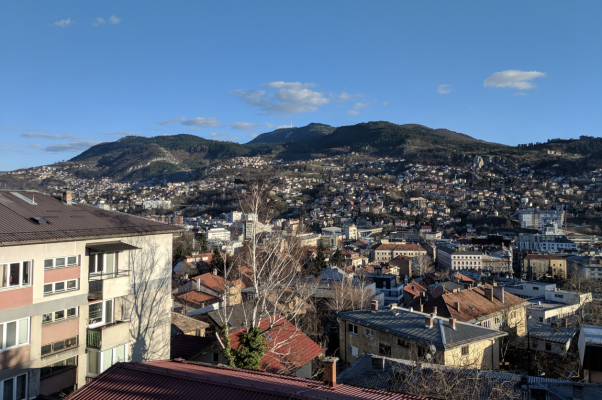
Decoding Information Hidden in Balkan JMBG ID Numbers
This is another post in our series on how to understand and interpret identification numbers in global investigations. Today we’re focused on the Unique Master Citizen Number (JMBG) in the Balkans. See our previous post on Russian passport numbers here.
When investigating ownership structures and financial crime in the Balkans, one of toughest challenges is confirming that the subjects of a query are in fact who you think they are. In a region where middle names are not common and multiple people can have the same name, the process of tying holdings and involvements to specific individuals is rife with uncertainty.
However, if you have a solid understanding of the Balkan Unique Master Citizen Number (JMBG), you can confirm key identifiers of individuals of interest and reduce your chance of confusing different people with the same name.
What is the JMBG?
The Unique Master Citizen Number, or JMBG (Jedinstveni Matični Broj Građana), is a 13-digit code assigned at birth to all citizens of the former Yugoslav republics—Bosnia and Herzegovina, Croatia, Montenegro, North Macedonia, Serbia, and Slovenia.
The number has four sections, three of which contain personally identifiable information about the owner. These include date of birth, region of birth or residency, and gender.
The JMBG is used in all facets of Balkan life—banking, healthcare, identification, travel, legal matters—similar to the Social Security Number in the United States. It is a permanent number and does not change.
Because the Balkan region features multiple languages, the JMBG goes by several different names:
Country
Bosnia and Herzegovina
Croatia
Montenegro
North Macedonia
Serbia
Slovenia
Name
Jedinstveni matični broj građana
Jedinstveni matični broj građana
Јединствени матични број грађана
Единствениот матичен број на граѓаните
Јединствени матични број грађана
Enotna matična številka občana
How to Understand the JMBG
JMBG Structure
First, let’s look at the structure of the JMBG. Its 13 digits break down like this:
DD MM YYY RR GGG C
(D = day; M = month; Y = year; R = region; G = gender; C = control)
The first seven digits of the number indicate the owner’s date of birth. It is important to remember that only the last three digits of the year appear (1980 becomes “980,” for example).
The next two digits contain geographic information. Because the JMBG was introduced for all Yugoslav citizens on Jan. 8, 1977, interpreting this depends on the owner’s date of birth. For citizens born before this date, these two digits indicate their region of residence at the time the number was issued. However, for citizens born on or after this date, they indicate place of birth.
In some cases, a JMBG can be issued to non-citizens, such as non-citizen permanent residents. This is denoted with a number indicating non-citizen status and the region where the JMBG was issued.
The next three digits indicate the owner’s gender. If the three digit value falls within the range 000-499, the individual is male. If it falls within the range 500-999, the individual is female. The ranges allow for unique numbers among people born on the same day in the same region.
Lastly, the final digit in the sequence is a control number, or checksum, calculated from the other values. This is used to check the number for errors. This number does not contain any personally identifiable information.
Example: Naser Kelmendi
For an example, we can look at the case of Naser Kelmendi, a Balkan crime boss sanctioned in 2012 by the U.S. Department of the Treasury for narcotics trafficking. The Treasury notice lists Kelmendi’s JMBG, 1502957172694, in addition to several other identifying pieces of information.
Let’s apply what we know about the JMBG’s breakdown to Kelmendi’s number:
– The first seven digits indicate that he was born on Feb. 15, 1957 (1502957).
– Because he was born before 1976, the number 17 indicates that his place of residence at the time the JMBG was issued was Sarajevo, Bosnia and Herzegovina. (Note: had he been born after 1976, this number would indicate Sarajevo as his place of birth.)
– Finally, 269 is less than 499, so we can confirm that he is male.
Where can you find the JMBG?
The public availability of the JMBG throughout the Balkans varies from country to country.
Since the breakup of Yugoslavia in the 1990s, many of the former republics have raised concerns about privacy and whether or not the number should be publicly available. Some, such as Bosnia and Herzegovina, have restricted access to it, redacting it from public documents and government records disclosures.
Croatia moved in 2009 to replace the JMBG with a randomized Personal Identification Number (Osobni Identifikacijski Broj or OIB). However, this replacement is far from complete, and many institutions still require the JMBG for basic functions.
However, other states continue to make the JMBG easily available. For example, Serbia’s business registry allows users to view the full JMBGs of shareholders and directors, and Montenegro’s land registry offers a search-by-JMBG option.
JMBG: A Valuable Tool
Despite the differences in public availability, all the former republics continue to issue, use, and accept the JMBG as a valid ID number. As long as this is the case, it will continue to be a valuable resource for investigators seeking to confirm the subjects of their queries and locate their additional involvements throughout the Balkans.
